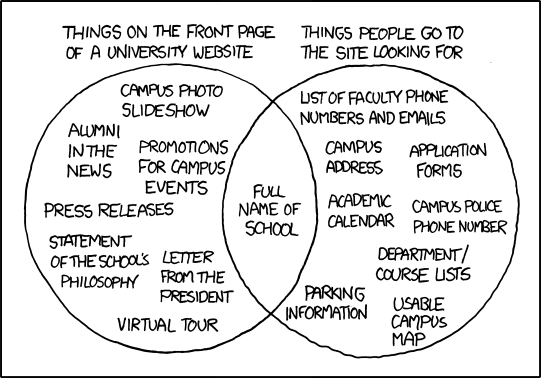5 reasons you should stop fighting over your nonprofit’s home page
Nonprofit organizations often have many internal departments, and each one becomes a stakeholder group when considering the organization’s website. A common problem for nonprofits is that these stakeholders end up competing with each other for real estate on the home page of the organization’s website: each group wants to promote their own content and be seen by as many visitors as possible, which usually results in friction among staff.
Here are five reasons to stop fighting over your nonprofit’s home page.
1. To protect your website’s design
One of the most obvious reasons to avoid fighting over your home page is design. If everyone in your nonprofit got to promote everything they wanted on the home page, there’s a good chance that it would become a cluttered mess. There’s only so much space available for content. You need to account for not only other content, but also any elements that have been built into the design, such as imagery, icons, buttons and other interaction elements, and even whitespace.
A home page that looks cluttered because you’re trying to draw attention to many things will produce the opposite effect. Visitors may become overwhelmed by the abundance of content or confused about where to look and how to navigate. They may even adopt the view that your nonprofit itself is scattered and unfocused.
2. To give your audience what they want
There are two primary questions that drive your website’s content:
- What does your nonprofit want to promote?
- What does your audience want to know?
It can be easy to overlook the latter when you’ve spent months producing material for a particular campaign, a concept cleverly illustrated by this Venn diagram about a university’s home page content from the xkcd comic.
The truth is, your audience will see your nonprofit in a more positive light if they can easily find what they’re looking for on your website. To achieve this, you may need to make some compromises with regard to what you promote on your home page.
3. Not all visitors are arriving on your home page
Websites are not like brick-and-mortar stores with only one entrance. Search engines will index all of your site’s pages, not just the home page. A Google search for “about [your organization]” may list your About page higher than your home page in the results. Your newsletters and social media posts will promote other pages in your site as well, so you can assume that your visitors will arrive at your site through many different paths. Instead of fighting for attention on your home page, take advantage of these paths by promoting your content on subpages.
4. To encourage other sites to link to yours
Another benefit of promoting content on pages other than just the home page is that helps you to nurture cross-links with other reputable sites, a practice that can improve your search engine rankings.
Suppose your nonprofit is promoting a new campaign. By focusing the promotion of that campaign on its own page instead of the home page, you make it easier for other sites to help you to promote it: they can link directly to a page dedicated to that campaign rather than sending their audience to your home page and expecting them to wade through all your other home page content in hopes to find information about it. More quality cross-links definitely improve search engine rankings.
5. The home page is not a “money” page
Traditionally, the home page is not seen as a “money” page; it’s not a page expected to convince your visitors to convert (buy, donate, volunteer, and so on). These calls-to-action normally require a stronger push than can be achieved through a blurb on your home page. Visitors won’t donate until you tell them all about the great ways in which their donations help; they won’t volunteer until you show them how fulfilling it can be to work with your nonprofit. This is another reason to focus on promoting this content through dedicated subpages rather than the home page.
Hopefully these tips will help you to relax and stop fighting with your colleagues over home page space and instead focus on promoting the great work your nonprofit does!



 PRINT
PRINT
